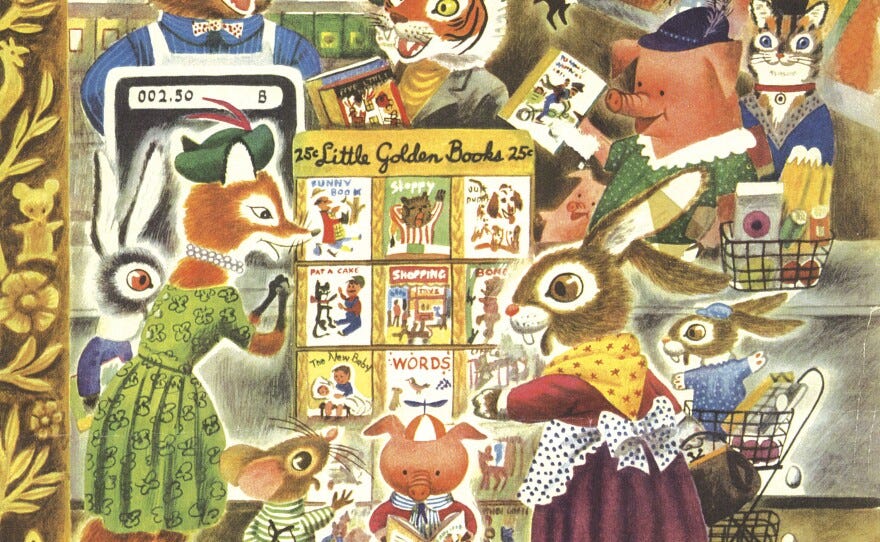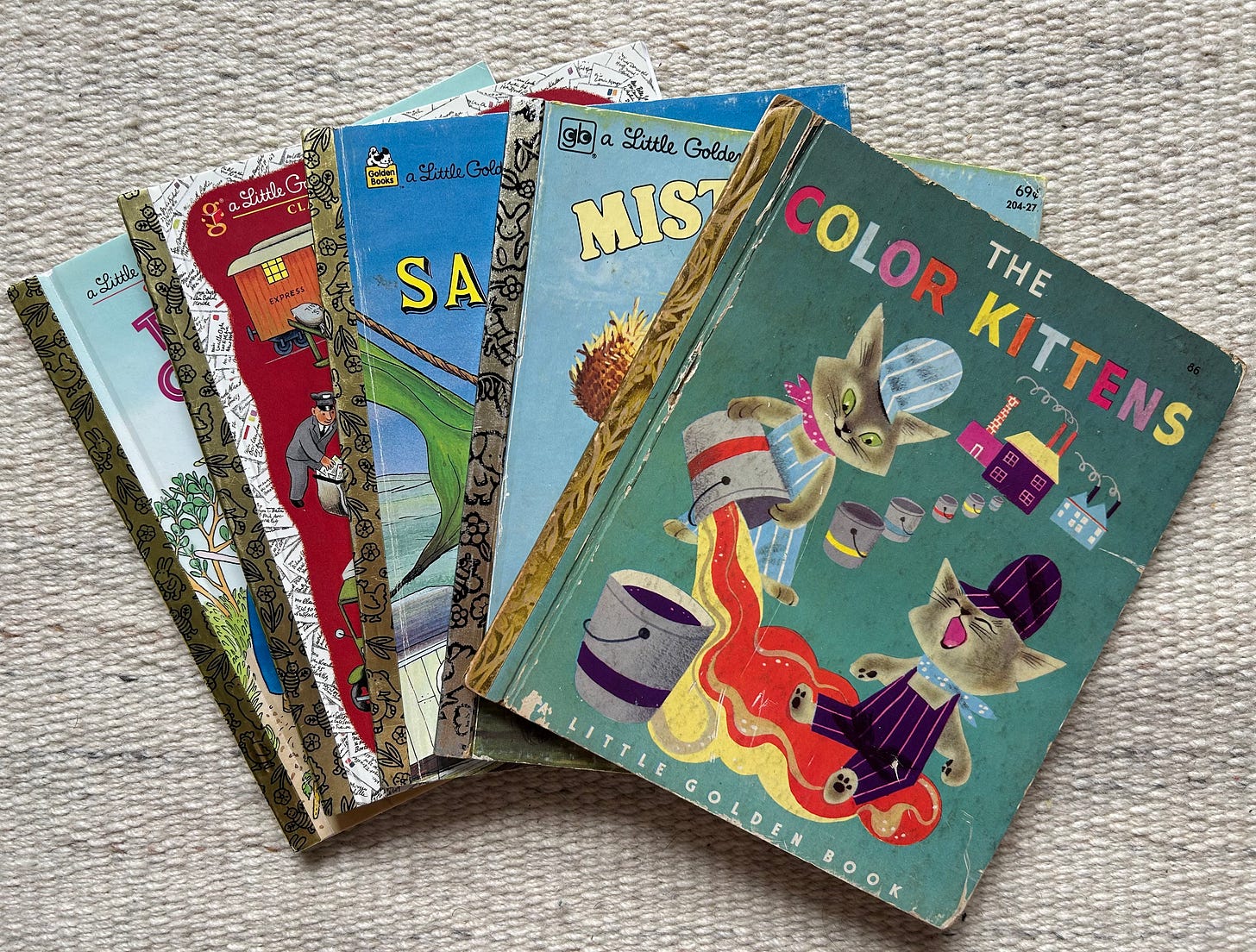When I was a kid (a phrase that feels weird to write as I feel like a kid nearly every day of my life, even as I’m pushing 30), one of my favorite books was a Little Golden Book called I Can Fly. An original #girlboss story, this tale features a young girl who can be and do anything she sets her mind to—throughout these pages, that means mimicking an array of animals’ movements and behaviors in various settings.
Mary Blair’s vibrant illustrations are seared into my brain, and despite having not opened the book in roughly 15 years, I can still recite it word for word, cover to cover. I remember memorizing each page and “reading” it aloud long before I could actually read. I can do anything, including fooling adults into thinking they are in the presence of a child prodigy.




I’m not sure why this particular book was on my mind today (I can’t seem to locate my childhood copy, and couldn’t tell you the last time I remember seeing it), but it did get me thinking about Little Golden Books, and I felt compelled to do a bit of research.
If you were a child at any point in the last 80 years (a safe assumption, I’d wager), chances are you’ve encountered a Little Golden Book at some point. What you may not know is that these books revolutionized children’s literature, making reading accessible to families across America.
Amid World War II and the aftermath of the Great Depression, Georges Duplaix, head of Artists and Writers Guild Inc. (a division of Western Publishing), had a groundbreaking idea. Partnering with Simon & Schuster, he envisioned a new kind of children’s book—smaller, sturdier, and significantly more affordable.
In the fall of 1942, the first 12 titles in the Little Golden Book series hit shelves. Among them was The Poky Little Puppy, which went on to become the best-selling children’s book of the 20th century, with nearly 15 million copies sold by 2001.
Before Little Golden Books, children’s books cost between $2 and $3—the equivalent of about $38-$50 today. As Leonard S. Marcus notes in Golden Legacy: How Golden Books Won Children’s Hearts, Changed Publishing Forever, and Became an American Icon Along the Way (2007), “At that price point, children’s books were a luxury for many families.” Little Golden Books shattered that precedent, launching at just 25 cents (about $4.20 today when adjusted for inflation).
Their distribution strategy was just as revolutionary. Instead of being confined to bookstores, Little Golden Books were sold in department stores, drugstores, and supermarkets—places families already shopped. Parents could give in to their child’s pleas without a second thought about the extra 25 cents on their receipt.
The success was immediate. Within five months, 1.5 million copies had sold. By 1945, most titles were already in their seventh printing.
It is worth noting that not everyone embraced this literary shift. Many librarians, long the gatekeepers of children’s literature, viewed the books with skepticism, wary of their simple plots and full-color illustrations—qualities reminiscent of comic books, which were then seen as lowbrow and even culturally corrosive.
Despite their affordability, Little Golden Books attracted top-tier talent, including Margaret Wise Brown, Clement Hurd, and Richard Scarry. Their covers notably omitted author and illustrator credits, focusing attention on the vibrant imagery, while the distinctive gold spine became an early example of branding in children’s publishing.
A signature feature quickly emerged: the “This Little Golden Book Belongs To…” bookplate. As Marcus observes, this simple addition symbolized how Little Golden Books democratized reading. Unlike expensive books kept out of reach, these belonged to children, with space to write their names—a small but powerful statement of ownership.
The editorial team collaborated with educators and psychologists to ensure the books resonated with young readers. “A new child in the family, a pet of one’s own, the first day of school—these are themes kids can relate to over generations,” Marcus explains. The books’ storytelling and illustrations allowed children to see themselves—even when the characters were animals.
By 1986, Little Golden Books had printed its billionth book. Today, the price has risen to $5.99—still remarkably close to its original inflation-adjusted cost.
By creating affordable, high-quality books and selling them where families shopped, Little Golden Books brought, and continues to bring, the joy of reading to millions of children. Their legacy isn’t just in beloved stories or billions of copies sold—it’s in proving that children’s literature can be both excellent and accessible.
Sources:
Still Golden: Little Golden Books Are 81 Years Old & Going Strong (2023)
Little Golden Books Turns 75! A Look Back at the Iconic Collection with Editor Diane Muldrow (2017)
‘The Poky Little Puppy’ And His Fellow Little Golden Books Are Turning 75 (2017)
Thanks for reading. If you enjoy children’s books and reading about them, and want to help keep this newsletter free for everyone, consider subscribing for just $5/month. No offspring required.








love this. we somehow got "Little Mommy" which is a wild one, not quite the feminist cri de coeur but we read it a million times anyway
I just spent a lot more than 25 cents trying to get a copy of the first Little Golden Book I ever memoread. Worth it!